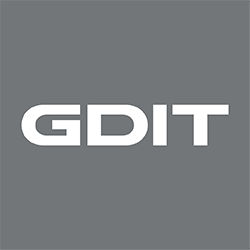Cyber, Defense, Digital Engineering, Zero Trust 4 MIN Read
Top Success Factors for Nuclear Deterrence Missions
July 19th, 2024
OUR DIGITAL ACCELERATORS
Learn more about our Digital Engineering solution.
Technology is taking an increasingly important role as both an enabler and an accelerator of mission success. Nowhere is that reality more apparent than in the nuclear defense and deterrence mission. This complex mission requires not only the latest technology, but also the trusted partners who can successfully implement them.
The land-sea-air components of the nuclear triad requires proven nuclear command, control and communications (NC3) expertise from an experienced partner who understands the technology, the mission, and the environments in which they operate. GDIT delivers this expertise in all the critical solution elements for C3 support success, including usability, availability, flexibility and a skilled workforce.
A Commercial-like, User Experience
Usability is a right, not just an expectation – and IT systems that are not easy to use and human-centered are impediments to effective mission support.
Effective mission partners build user experiences that are both frictionless and invisible to a user. They just work. They design for intuitiveness and familiarity – delivering the types of experiences that are typically seen from commercial applications. Effective mission partners also aim to create the capability for problems to self-resolve or to go unnoticed by the user. Put simply: Systems should be reliable, secure and available, and designed to allow a user to interface with technology while focusing on the task at hand.
High Availability for Readiness & Scalability
When it comes to availability of systems, the focus should be on readiness and scalability. Readiness of IT systems is just like readiness for the warfighter: It requires pre-planning and proactive design to ensure systems are available and ready to use when called upon. Users need a complete end-to-end capability that assesses the performance of circuits and systems. The goal should be zero outages, rather than relying on redundancies alone.
The same is true when it comes to the scalability of systems. Systems should be capable of scaling to meet mission needs when called upon. This, too, requires planning and proactiveness – because building an end-to-end capability across all of the systems that comprise NC3 depends on the availability of IT as a critical subset of these systems of systems.
Flexibility to Meet Changing Mission Needs
To stay ahead, our government and the private sector must collaborate, create favorable conditions for innovation, and invest in the tools and talent to accelerate technology to mission. Our collective ability to invent, adopt, and adapt new technologies – and to do it faster and better – will be critical to maintaining our global leadership position.
GDIT’s years of experience supporting mission critical work across the Defense, Intelligence and Homeland Security spaces has given us a unique opportunity to build and prove solutions that accelerate and enhance flexibility to address changing mission needs. Relevant to NC3 are our Digital Engineering, Artificial Intelligence Operations (AIOps) and Zero Trust capabilities.
Digital Engineering provides users with the flexibility to model existing systems and test changes before they go into production. This means teams can leverage new or emerging capabilities that will ultimately enable C3 teams to improve upon the reliability and scalability of systems, without negatively impacting production. Our AIOps capability helps teams integrate automation capabilities into their operations to enable greater flexibility in resource allocation, freeing up critical resources to attend to more mission-focused tasks. Finally, employing Zero Trust architectures enables a greater flexibility to defend not just networks, but the data that resides on them from internal and external threats in high-stakes environments.
Continuous Investment in a Skilled Workforce
None of the above happens without a skilled workforce that can implement and maintain critical systems. GDIT places a priority on attracting, retaining and continuously training our people to keep up with a rapidly evolving technology landscape. We see workforce readiness as a key business priority and competitive advantage.
The NC3 mission necessitates continuous evaluation and upgrade of team expertise with proactive identification of potential future skills gaps which can be addressed through individual training or recruitment. This involves leveraging scale and expertise, pinpointing key talent, and assembling a high-quality workforce from diverse technology areas across the United States. Investing in public-private partnerships to create new talent pipelines also plays a vital role in ensuring a continuous supply of new and emerging talent knowledgeable in the latest technologies.
Across all of the NC3 critical success factors – usability, availability, flexibility, and a skilled workforce – GDIT is a trusted partner to deliver when it matters most. Few things matter more than our nation’s readiness to support nuclear defense and deterrence missions, where GDIT is proud to align capability to mission needs.






